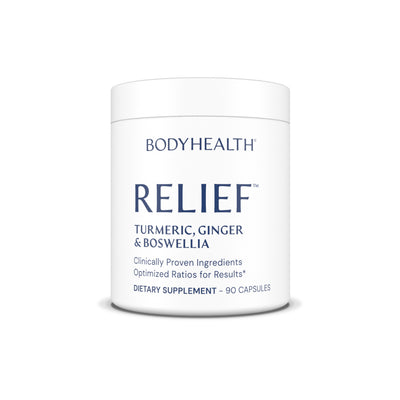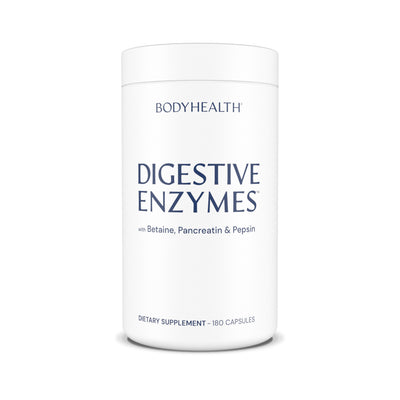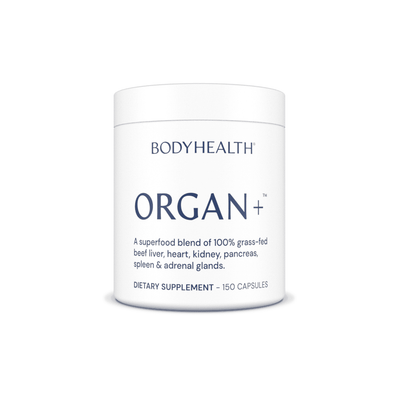Reducing DOMS: Delayed Onset Muscle Soreness
September 02, 2025 4 min read

Anyone who works out, runs, bikes or does any type of intense exercise, knows about DOMS — Delayed Onset Muscle Soreness.
This is the soreness you feel not right after a workout or exercise, but 24-48 hours later.
But it's also something which, when we address it, not only lessens DOMS, but improves overall recovery and sleep for faster lean muscle gains and fat loss.
At one point it was thought this was caused by just lactic acid build up, but this isn’t the case.
Lactic acid is an acid that starts to build up just before we reach our VO2 Max and can’t go any further in our exercise or workout. (VO2 Max is the Maximum amount, or Volume, of Oxygen (O2) that your cells can utilize during intense exercise, before you burn out.)
But lactic acid actually helps you. Your body can metabolize it (burn it and use it as fuel).
So what really causes DOMS? And how can we prevent it or lessen it?
Let’s see.
WHAT CAUSES DOMS: DELAYED ONSET MUSCLE SORENESS
As we go about our day, our body is working. More specifically, our cells are working. And they get injured and need to be repaired.
Run down a flight of steps and you’ll have thousands of tiny micro-fractures in your bone cells from the impacts.
Run up some steps and you’ll get micro-tears in your muscle tissue.
Even just going about your day, cells die off and new ones are formed.
This is natural.
And for every bit of repair that is needed, there is an immune response which brings on swelling and cortisol release. We just don’t feel it as it’s so tiny.
Unless of course you’ve been on your feet all day, and then you feel it because there’s much more of it.
But it’s this immune response that brings on swelling and cortisol that causes the soreness here.
But now let’s compare that to intense exercise or workouts, or even a marathon or triathlon.
Now we’re really putting our body through it, and we have much more tissue damage than we’d get just walking from our office to the coffee shop.
This we feel.
But we feel it more on the second and third day. And this is because the immune response and swelling builds up over time.
It started when the injury occurred, but it continues to build up over the next 2 days and goes away once our cells are repaired and it’s gotten out of our system.
How bad can it be?
How intense and long was the exercise?
But there are things we can do to minimize DOMS, both during the workout and after.
REDUCING OR PREVENTING DOMS: DELAYED ONSET MUSCLE SORENESS
So we have these micro-tears and micro-fractures occurring. The immune response and cortisol release starts immediately here.
However, things happen pretty fast in the body. Chemical reactions are very fast, nerve communications are near instantaneous. And healing can also start very fast, and at any time.
It can even occur as the tissue damage is taking place — if the body has what it needs to do so: the essential amino acids, essential fatty acids, vitamins and electrolytes.
Yes, most recovery occurs during the night, in the first few hours of sleep.
But when your body has what it needs, it can start occurring as soon as the trouble starts.
When we're talking about recovery right after a workout, solid proteins don’t help as much as they take too long to break down. You would need to have had the protein a few hours before for the amino acids to be present in your blood stream.
But PerfectAmino is fully absorbed in an average of 23 minutes and able to help repair micro-tears as they happen.
Taking two servings of PA before a workout, another serving after, and another serving a couple hours before bed can drastically speed up recovery and healing.
Essential fatty acids are also important, specifically Omega 3, as it helps to lower cortisol levels and is necessary for cellular repair.
There are also things called Free Radicals, which are released from injured cells and which can then cause harm to other cells, furthering the immune response.
Antioxidants, such as in our Multi Complete, Greens and Reds, help to remove these free radicals.
Magnesium helps to calm tension in our nerves and muscles, allowing for protein synthesis and repair, and also helps to remove lactic acid from the muscles.
There is also something called proteolytic enzymes. When your cells are injured or destroyed, partial proteins are released and these also bring on an immune response until cleared out.
Proteolytic enzymes help to break down these partial proteins faster to get them out of your system.
Obviously sleep is very important. This is where the majority of your recovery occurs.
We also need to stay away from processed sugars as these keep cortisol levels high, preventing the protein synthesis needed for repair.
If this was a very intense workout or something like a marathon or triathlon, there are other things that may be necessary and which can be very helpful.
Cold packs or cold baths we know about, and these do help.
Massage is another one, and also Pulse Magnetic Therapy Pads.
Both of these help tremendously after a very arduous event.
But key is proper nutrition, high volume of amino acids so repair can happen, and sufficient rest, sleep and recovery time.
I hope this helps.
Articles by Health Topic
Your Path To Better Health Starts Here!
From in-depth articles on nutritional benefits to updates on new product launches, stay informed and inspired on your journey to optimal health.
*These statements have not been evaluated by the Food and Drug Administration. These products are not intended to diagnose, treat, cure, or prevent any disease.













